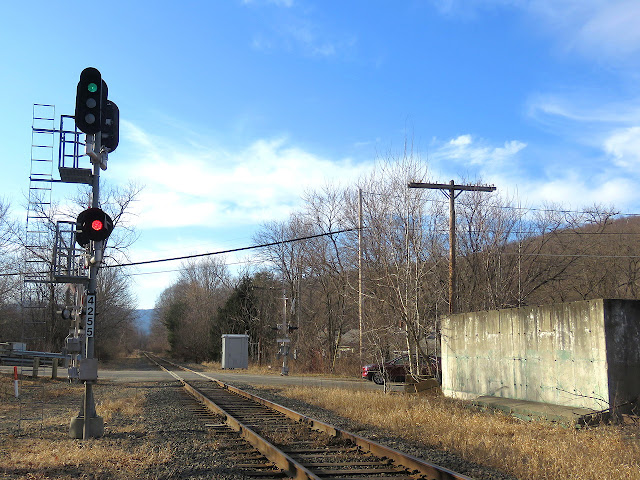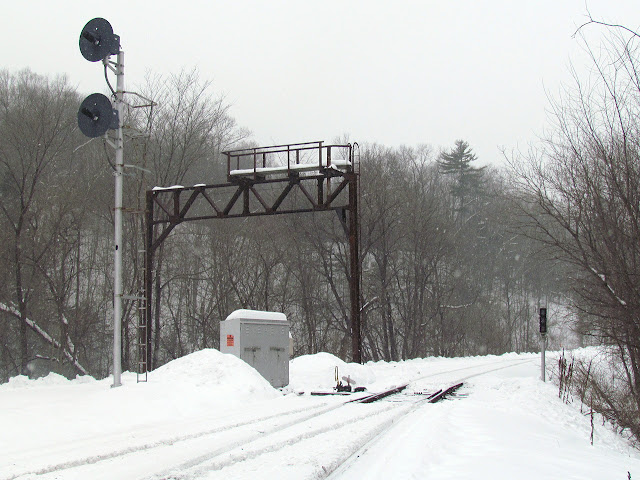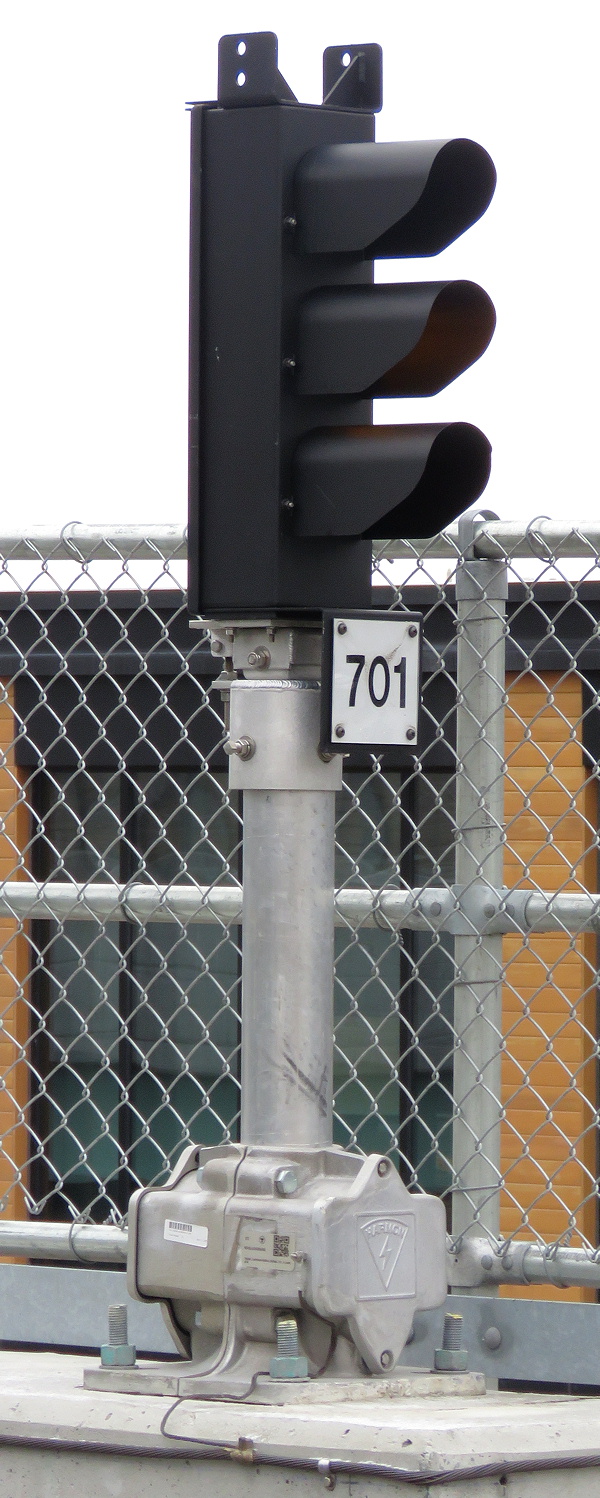The Albany Port Road Branch, now under long term lease to Amtrak, has an interesting history. One of the few stretches of non-commuter North American main line track dedicated solely to passenger operation, the Post Road Branch represents the original route of the Boston and Albany before the construction of the Selkirk Cutoff that allowed New York Contrail freight trains to bypass the Albany terminal area in the 1920's. In the 1970's, Penn Central completely ripped up the track on the 12 mile branch as a cost cutting measure before being ordered to restore it by the ICC. Since then it has hosted exactly two regular trains per day, the Boston section of the east and westbound Lake Shore Limited and with an 80mph track speeds, it currently represents the fastest portion of the Boston to Albany route.
Listed as operating under Rule 261 bi-directional signaling in the timetables of both Conrail and CSX one might assume that the line would have something on the order of 4 or 5 intermediate signal locations based on the typical North American main line block length of 2-3 miles. Riding the line I recall having trouble spotting these signal locations, but I assumed they were there. More recently I noticed that Boston Line CP-187 had been re-signaled by CSX and then used Google Earth to carefully scan the Post Road to see if Amtrak had used the opportunity to convert it to Rule 562 cab signals without wayside intermediates. I couldn't find the intermediates or their associated ACSES beacons, but there was also no evidence of cab signaling. It was only then I realized what Conrail had done.
In 2021 I reported on the Boston and Maine's budget CTC signaling on the Connecticut Valley route. Each CTC "block" of 6-8 miles in length might have only one intermediate signal, the distant two miles from the next CTC siding interlocking. Well when I saw the Milepost 188.8 intermediate above that governs only eastbound movements as they approach CP-187, it became clear that Conrail had done the same thing, just with a 10 mile long block.
Reviewing my archives I discovered a similar westbound only signal about 1-2 miles east of CP-141 at Albany confirming the use of a "superblock" type configuration. While this certainly matches the traffic levels of 2 trains per day and cuts down on some relay logic, it still means that a single faulty track circuit component can trigger up to 10 miles of Restricted speed operation, or possibly 10 miles of Approach.
With the limited traffic it will be interesting if Amtrak extends the cab signaling to CP-187 and close the last remaining cab signal gap between Boston and Albany. It's not like there are not intermediate signaling hardware on the line since a block that long needs occasional repeaters for track circuit integrity.





















